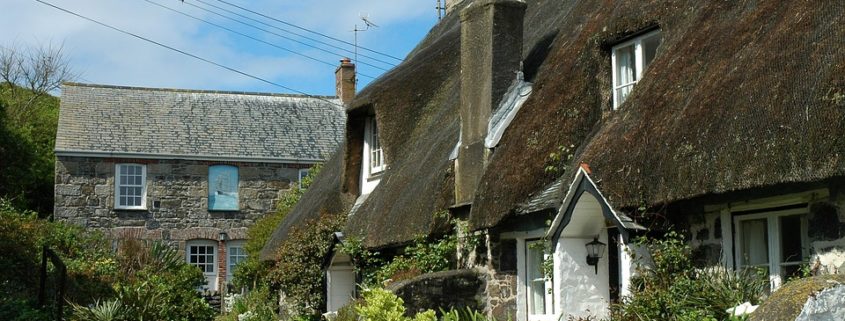Cornish Roofing Through the Ages
There is such a wide range of modern roofing solutions available these days that most of us take them for granted, that is until they need repairing! From ceramic tiles to natural roofing materials such as leaves, cob, wood, reeds and thatch – at one-time Cornish roofing primarily consisted of roofing materials found (and made) locally. The roofing industry has seen enormous leaps in technology and developments in roof application methods over the past 200 years.
Exploring how Cornish roofing has developed through history will help us to understand just how far we’ve come, and how modern roofing technology provides us with roofs which have more security, longevity and weathertightness than ever before.
The History of Cornish Roofing, in a Nutshell
Although most roofing advancements occurred at the dawn of the Industrial Revolution, the history of roofing construction started much earlier than this. The Romans and Greeks were the first to experiment with different roofing styles, and it is the Romans we can thank for introducing slate and tiled roofing to the UK in 100 B.C.
The design of traditional roofing evolved in direct response to the climate of the local area and the building materials and skills available. Traditional roofing techniques and styles were also much influenced by local trends, council regulations, wealth and fashion. Numerous materials have been used for roofing in Cornwall through the years which has given us a wealth of diverse and beautiful roofscapes. For the most prestigious buildings belonging to church, royalty or aristocracy, the roofing material of choice was lead or sometimes copper roofing, and this is still true today. Thousands of historic buildings have survived for centuries despite changing weather patterns, dramatic storms and changes in the way buildings are used.
In Devon and Cornwall, rainfall is much higher but there was a lack of good quality timber. Roof pitches are shallower, so detailing has evolved locally from region to region to compensate. For example, “west country straw-thatch” was combed to remove all the leaves and shoots, and fixed with all the butts pointing downwards to speed the passage of water from the roof. It is this kind of anecdote which we think makes the history of Cornish roofing so fascinating!
History of Thatched Roofs in Cornwall
Thatched roofs became popular around the year 735 AD and were used on cottages and dwellings all over the country. Thatched roofs provided the ideal solution for areas where only natural materials were readily-accessible such as here in Cornwall. For centuries, combed wheat reed was the material of choice for Cornish thatched cottages. Although beautiful, old thatched roofs had several flaws which eventually lead to their demise as the primary roofing material in Great Britain. Thatched roofs always used to degrade quickly, required regular levels of high maintenance and were highly flammable. In an effort to prevent the spread of fire, King John passed a law in the 12th century stating that all Londoners had to replace their thatch and reed roofs with clay tiles. This is believed to be the advent of mass produced roofing tiles! Due to their upkeep, these days thatched roofs are considered quite a luxury and you’ll find thatched roofs in Cornish villages near the coast in some very picturesque locations.
History of Roofing Tiles
The Industrial Revolution vastly improved transport links, and the creation of the canals and railways led to the rapid export of cheaper, lightweight Welsh slate and machine-made tiles around the country. Previous to this, clay was only able to be used in areas where it was naturally found, such as near rivers and lakes. China clay, which comprises a huge part of Cornwall’s mining heritage, was once used to make clay roofing tiles all over the world. Whilst clay roof tiles have been used on roofs for centuries, concrete roof tiles have become more widespread over the last half a century due to their convenience and cost. Modern concrete roof tiles are made from cement, graded sands and pigments and formed into a number of distinctive tile designs, which makes the, a very lightweight and attractive roofing option.
Choosing the right type of roof is a crucial step in roof design. Some types of roofing may be better suited for your house than others. Factors such as the slope of the roof and strength of the framing could limit your choices, and the type of roof tile chosen will strongly influence the aesthetic look you achieve (and of course the final cost too!).
Do get in touch so that we can provide you with a free quote for your all your Cornish roofing requirements, we look forward to hearing from you!



Leave a Reply
Want to join the discussion?Feel free to contribute!